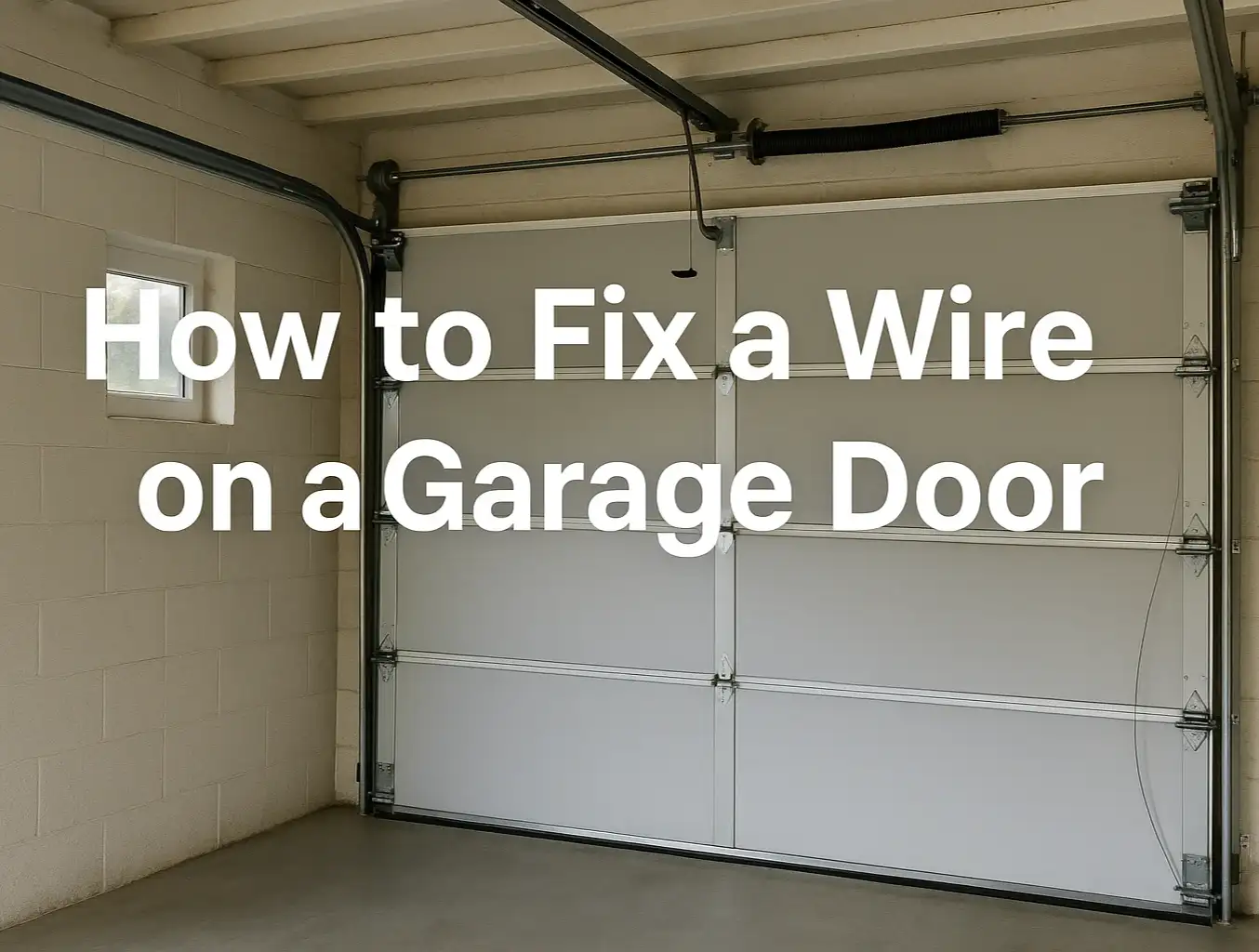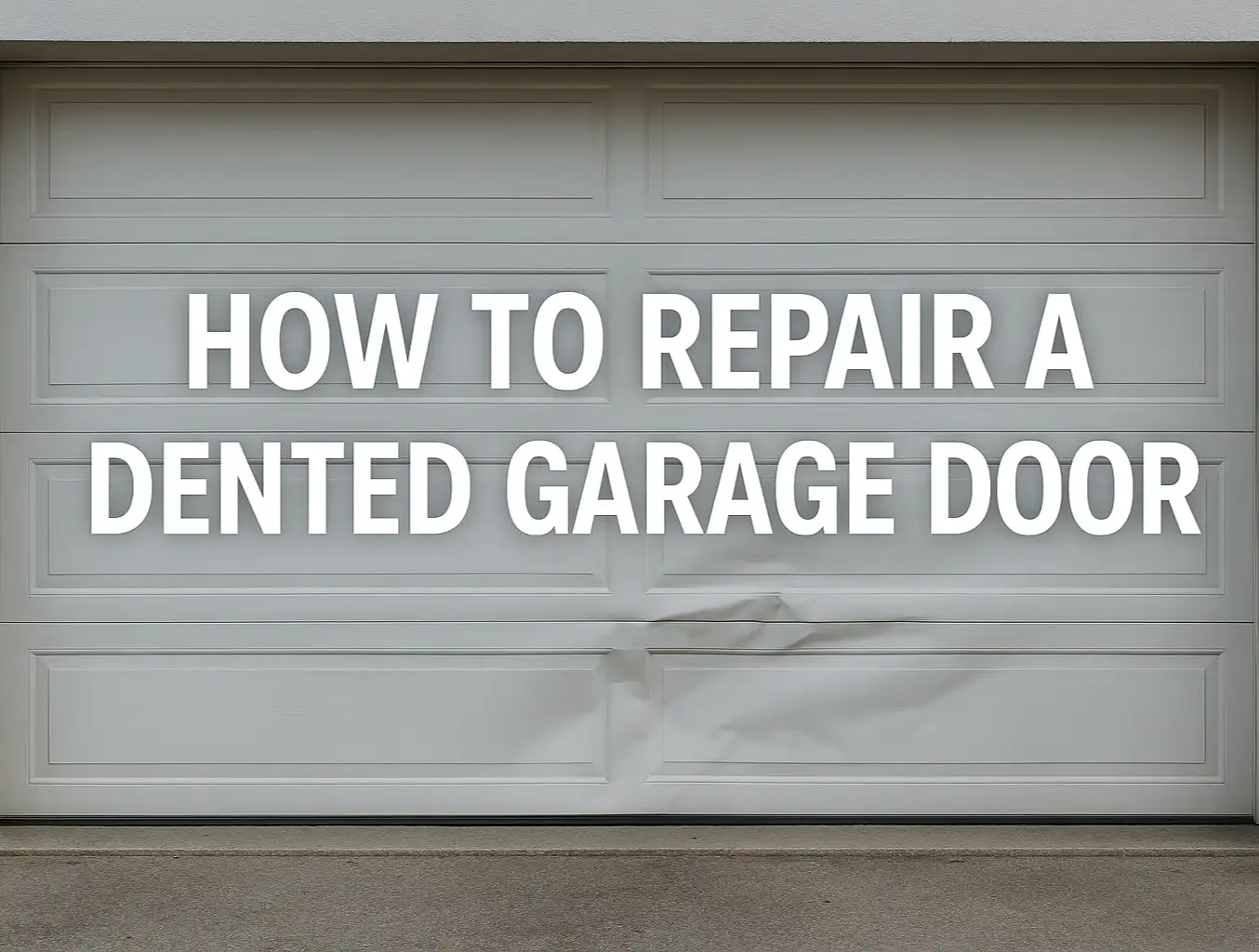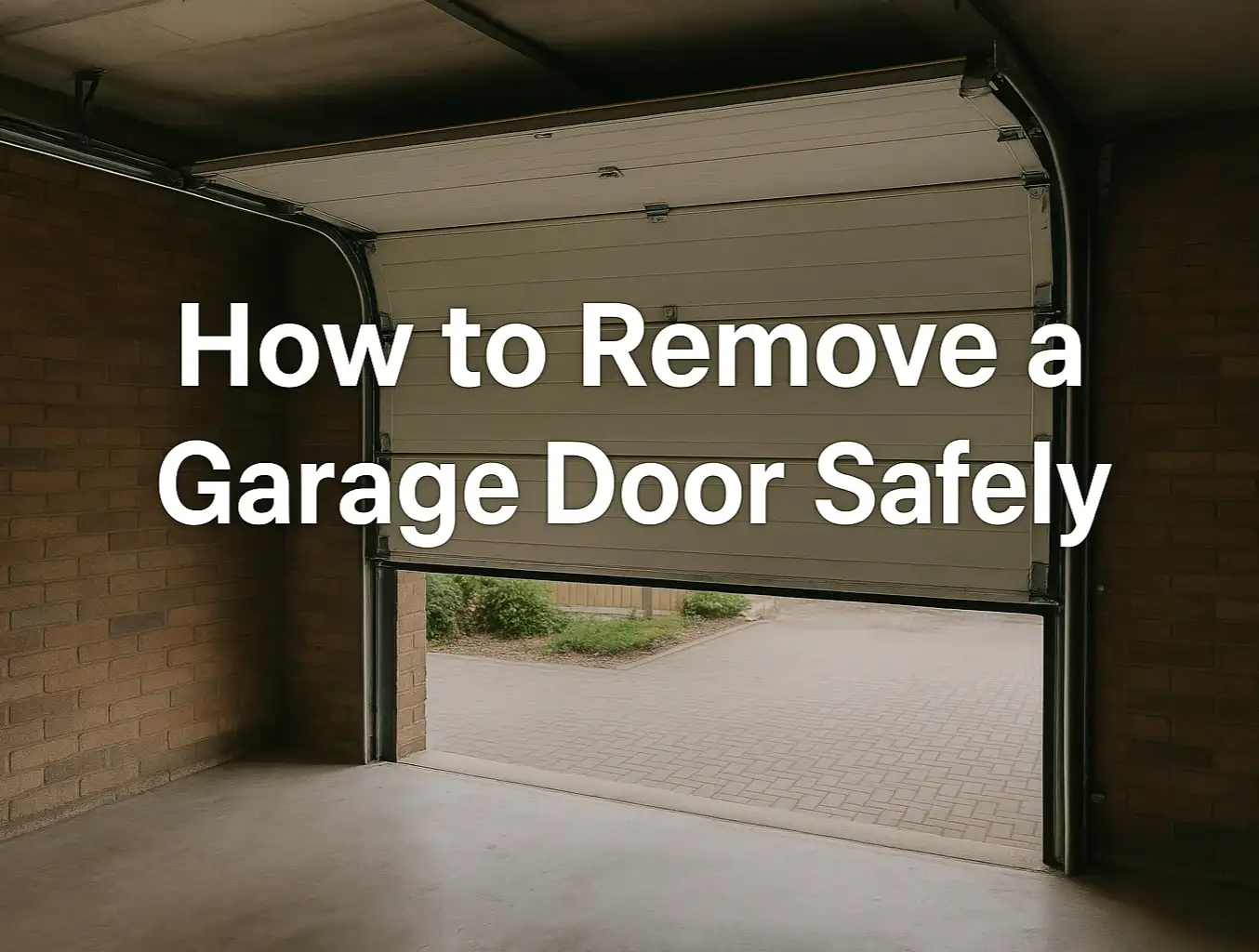How to Remove Dents from a Garage Door: Step-by-Step Guide
Published: Oct 24, 2025
Your kid’s bike tips over and the handlebar stamps a pea-sized dimple in the middle of your steel panel. The door still works, but that tiny dent catches your eye every time you pull in. If you’re searching for how to remove dents from a garage door, start with a quick check: note the door material, the size, and whether there’s a paint crease or a dent on a seam or rib. Minor, shallow dents in metal can sometimes be eased out with simple tools, while creases, bowed ribs, or cracked paint call for a professional. This guide from Up & Down Garage Doors shows you how to assess the damage, try safe DIY options on small metal dents, and know exactly when to switch to professional repair or a panel replacement.
Garage Door Dent Repair: Quick Definition
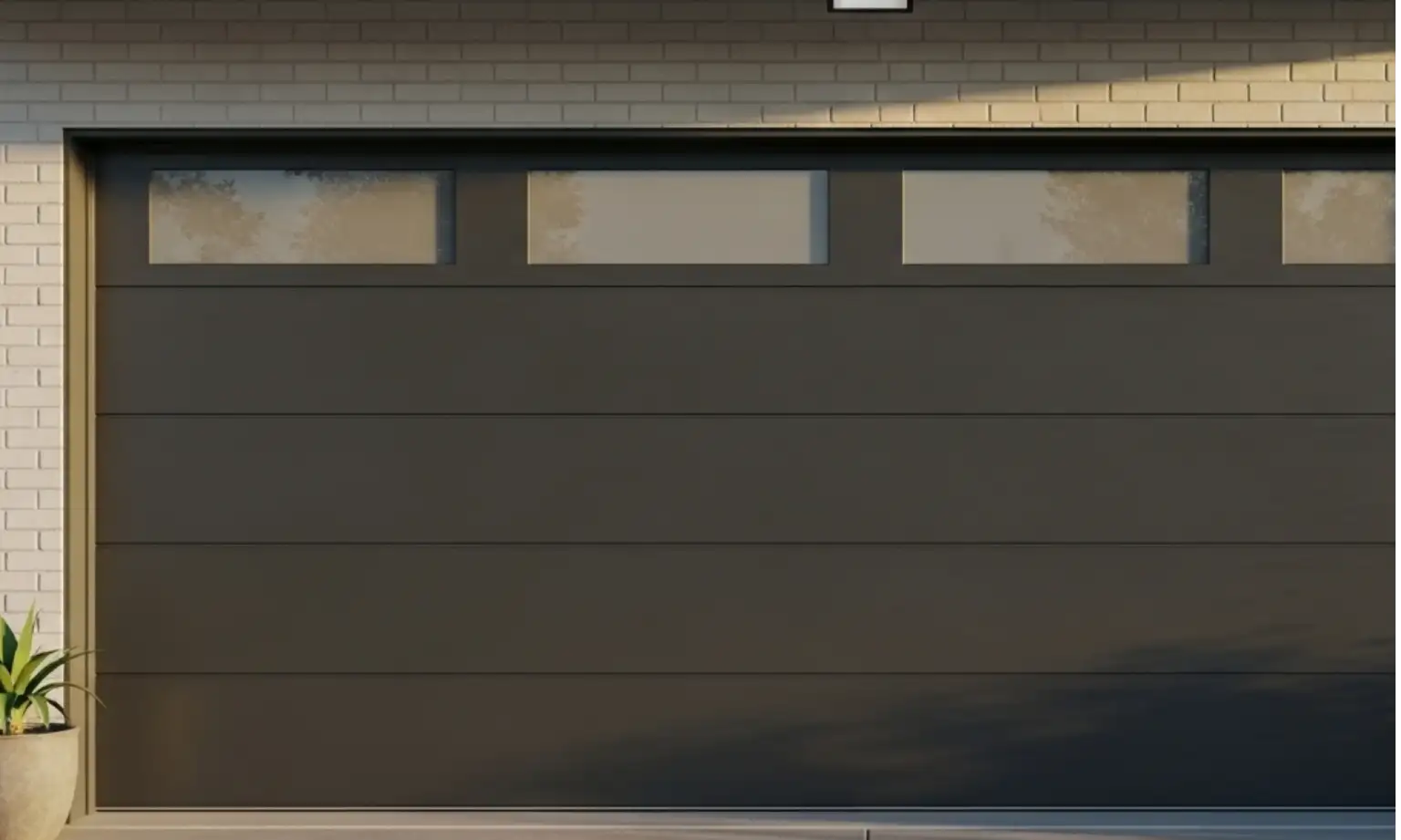
Garage door dent repair is the process of smoothing indentations in a door’s panels, most often on steel or aluminum doors. Done right, it freshens curb appeal, helps prevent rust or flaking paint, and often costs less than replacing an entire panel — or the whole door.
Results depend on three things: material, size, and location. Steel and aluminum handle minor dents well, wood doesn’t “pop” back. Quarter-sized dings are good candidates. Deep creases are tougher. And location matters — dents on seams or ribs are harder to blend than those in the flat center of a panel.

Common Causes of Garage Door Dents
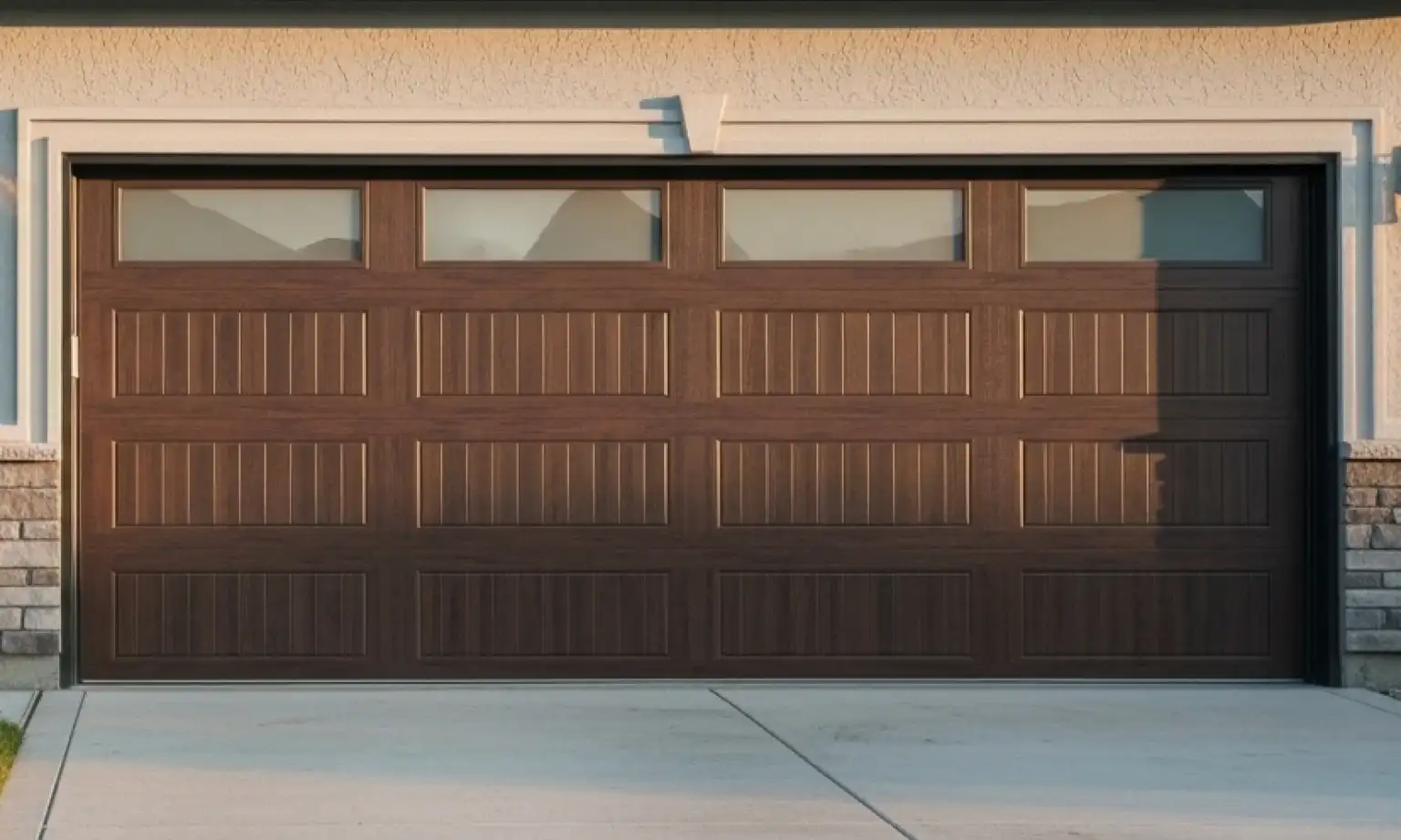
Before you fix a garage door panel, figure out what caused the damage. Most dents come from everyday impacts — anything from a bumper tap to a trailer hitch nudging a lower section. Weather can play a role too, especially severe hailstorms that leave pockmarks on aluminum doors. Recreational hits count as well: a basketball, hockey puck, or baseball can leave a dimple.
Not every dent is a direct hit. If the door closes on a trash bin, bike, or ladder, the panel can bow or crease. Hardware issues — like a weak spring, a cable slipping off the drum, or misaligned tracks — can make the door travel crooked and crease a panel as it moves (see how to repair a dented garage door for professional tips).

Materials Matter: DIY Methods for Steel, Aluminum, and Wood
Planning to fix a dent in your garage door? Ask first: is the panel steel or aluminum (good for gentle pop methods), or wood or composite (better for filler and paint)?
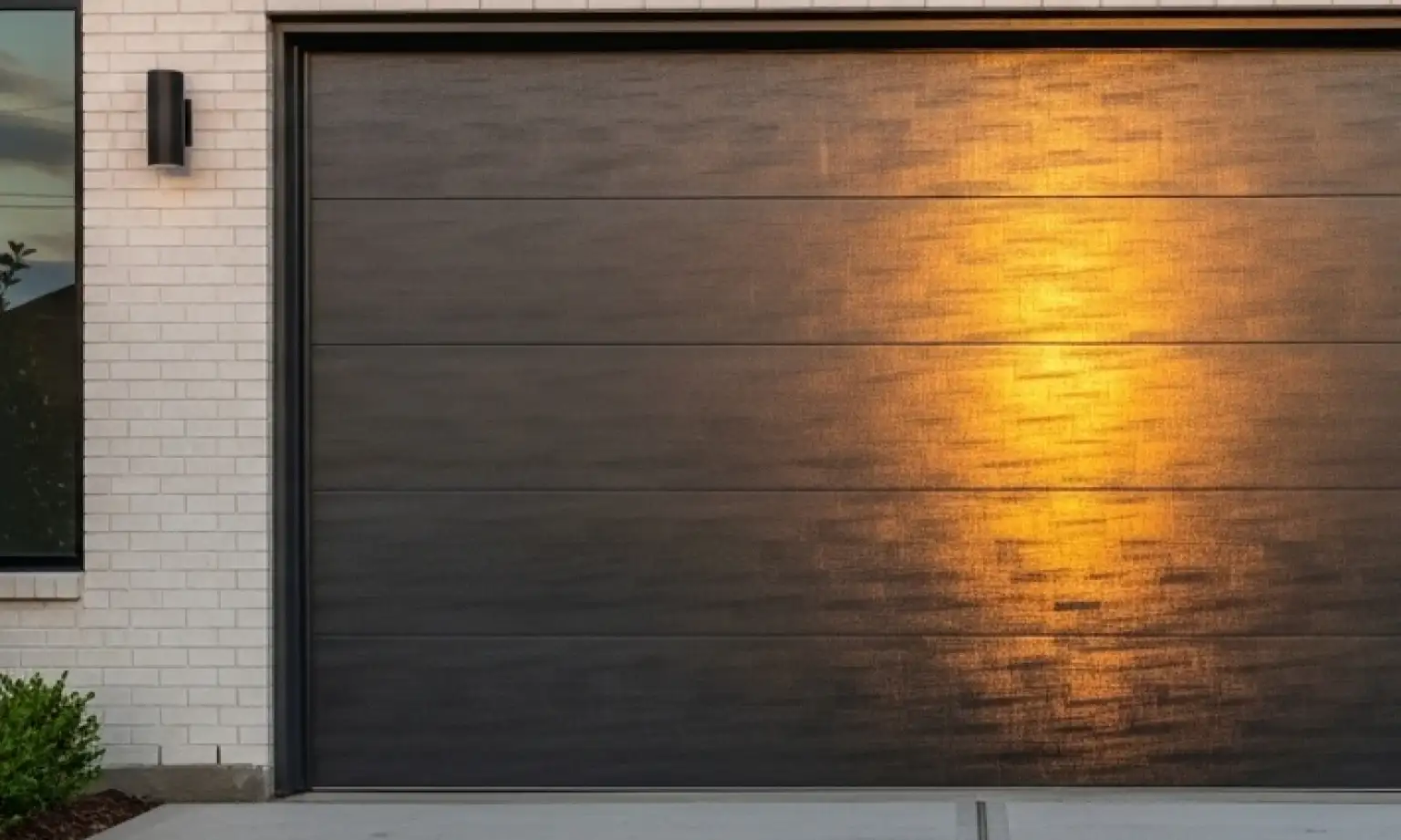
Steel & Aluminum Doors
These metals have a little give. For a shallow dent, clean the area, support the back side with a 2×4 wrapped in a microfiber cloth, and use light taps with a rubber mallet along the dent’s edges. You can also try a controlled heat-cold cycle: warm the spot with a hair dryer, then flip a can of compressed air upside down to chill it — the rapid temperature change may ease the metal back. A small suction cup can help on smooth, flat sections. Always spot-test first and avoid seams, ribs, and any area with cracked paint or a wood-grain wrap.
Wood or Composite Doors
These materials don’t pop back. A dent acts more like a crush, so the typical approach is to fill, sand, prime, and paint. It can be tough to blend perfectly, and larger or creased spots are better handled by a pro. If the damage is beyond a small cosmetic touch-up, see how to fix a garage door panel for the next steps.

When to Call a Professional for Dent Repair
If you’re weighing how to remove dents from a garage door, start with a quick check: confirm the material (steel or aluminum vs. wood or composite), size up the dent, and look for red flags like sharp creases, bowed ribs, cracked paint, or damage on a panel seam or rib. Light DIY on shallow metal dents — cleaning, gentle inside support with a 2×4 and microfiber, careful heat-cold cycling, or a small suction cup — can tidy up minor spots.
DIY ends when dents are deep, creased, on seams or ribs, on wood or composite panels, or if the door’s operation changes (sticking, scraping, uneven travel). Tackling complex dents yourself can make the damage worse or weaken the panel. Often, the safest and most effective route is professional garage door dent repair. A technician from Up & Down Garage Doors will tell you whether to repair or replace the section. For fast scheduling and dependable results, book garage door services — we’ll get your door looking and working like new.
Frequently Asked Questions
Can I fix a dent in any garage door?
No. DIY methods are usually only suitable for shallow dents in flexible metals like steel or aluminum. Dents in wood or composite doors require filling and repainting. Deep, creased, or large dents in any material should be handled by a professional.
Will a suction cup dent puller work on a garage door?
It can help with very shallow, broad dents on a flat, smooth panel. However, many garage door sections have a textured surface (e.g., wood grain) or a ribbed panel, which prevents the suction cup from getting a proper seal.
Is it better to repair or replace a dented garage door panel?
If the dent is small and the panel’s structure is intact, a repair is usually more cost-effective. If the dent is large, creased, or the paint is cracked — which can lead to rust — replacement is often the better long-term solution. Replacement also makes sense when the panel is an older model that no longer matches.
